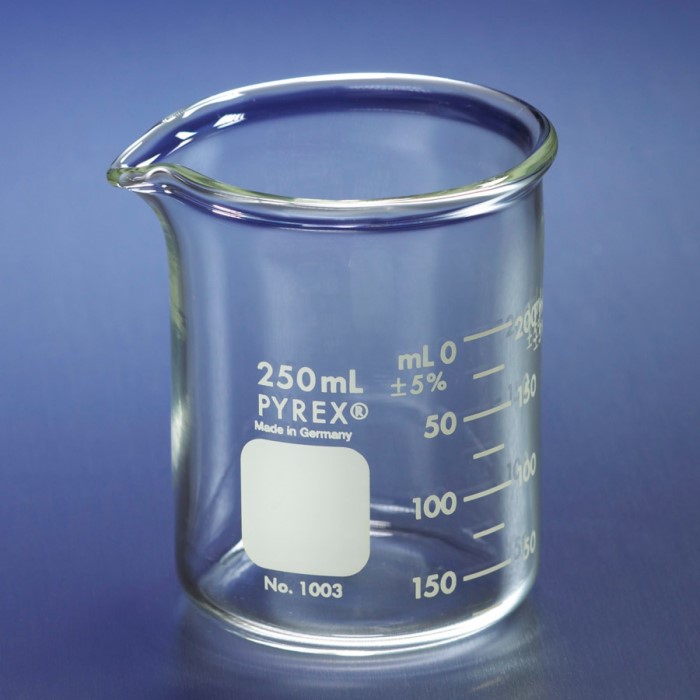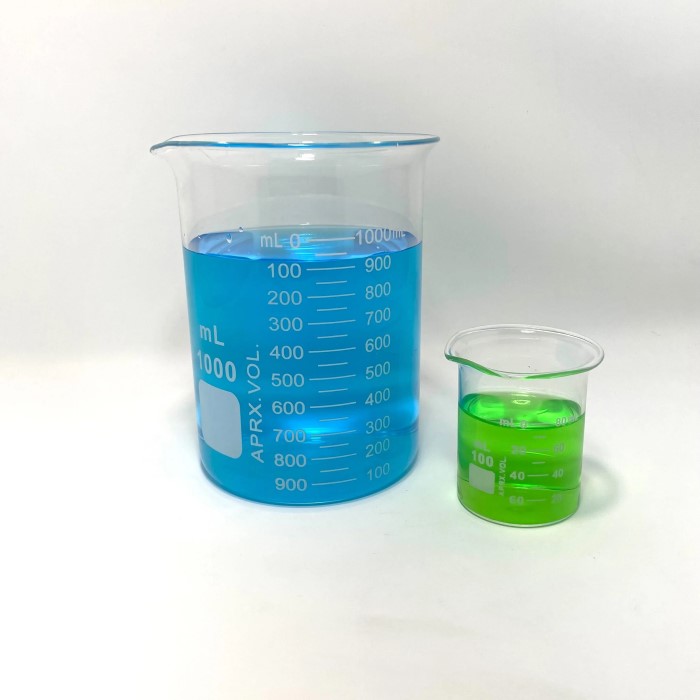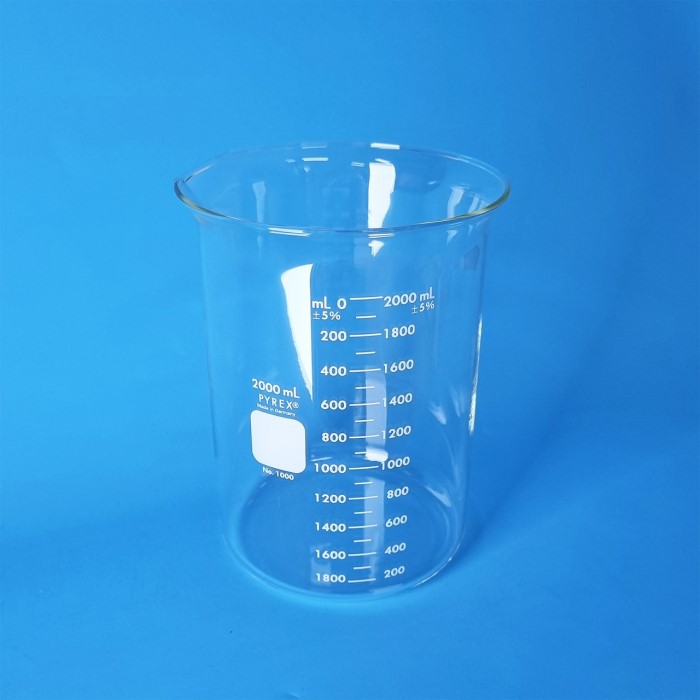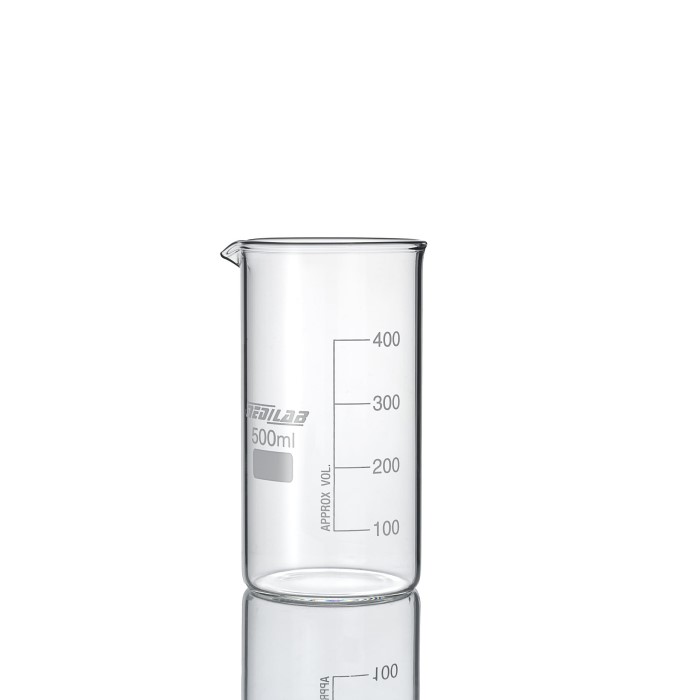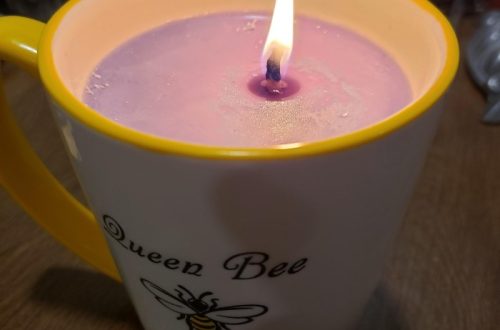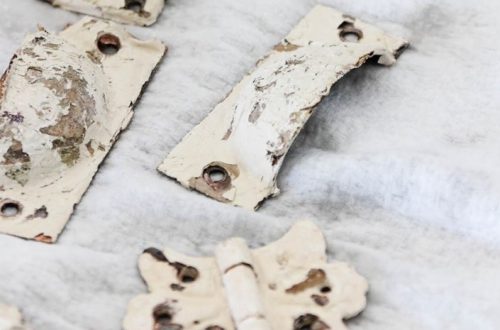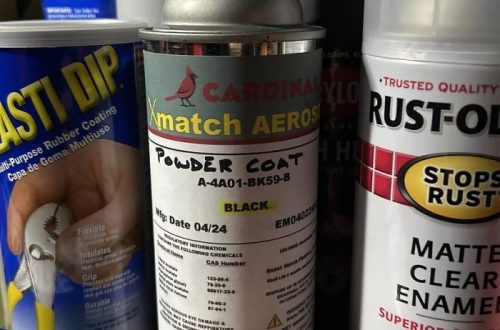What Is a Graduated Beaker?
A graduated beaker is a simple laboratory tool. It is designed to measure liquid volumes. The body of the beaker typically has marked graduations. These graduations help indicate specific measurement levels.
Graduated beakers come in various sizes and capacities. The markings allow users to measure different quantities effectively. They are made to be cylindrical, with a flat base for stability. The lip of the beaker often helps with pouring liquids with less spillage.
Graduated beakers are widely used in chemistry, biology, and other sciences. Their accuracy varies based on the design and material. These tools are essential for experiments that require liquid measurements. In summary, a graduated beaker combines simplicity and functionality for practical laboratory use.
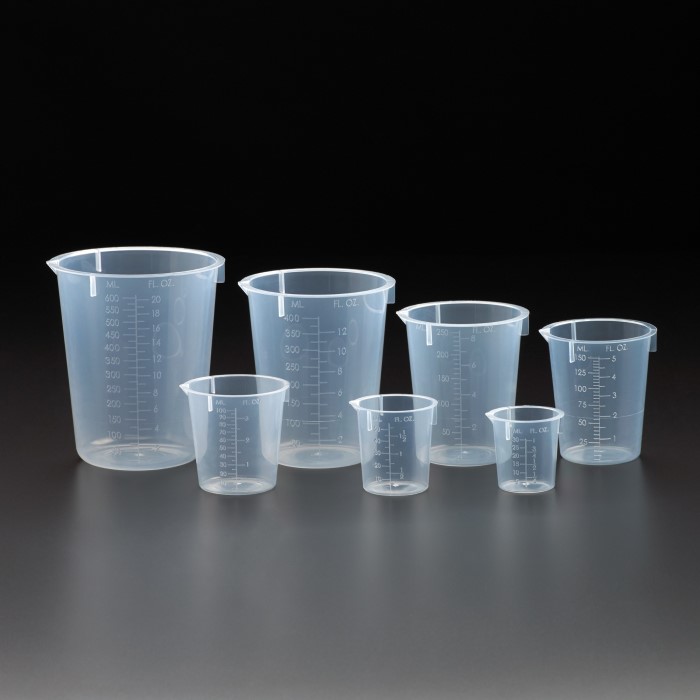
Key Features
Graduated beakers are uniquely designed to meet the needs of laboratory measurements. Here are the key features that make them indispensable:
1. Clear Marked Graduations
The beaker has precise markings on its surface. These graduations help users measure liquids accurately. Each mark indicates a specific volume, making it easy to use.
2. Cylindrical Shape
Graduated beakers have a cylindrical design. This shape helps them remain stable on flat surfaces.
3. Flat Base
The flat base provides balance and prevents tipping over. It ensures better safety during experiments.
4. Pouring Lip
Most graduated beakers feature a small lip for pouring liquids. This prevents spills and ensures precise transfer of liquids.
5. Material Durability
They are made from durable materials like glass or plastic. These materials resist chemical damage and ensure long-term use.
6. Varied Capacities
Graduated beakers come in various sizes, from a few milliliters to several liters. This range suits different experimental needs.
By understanding these features, you can choose the right graduated beaker for your lab work.
Common Materials Used
Graduated beakers are crafted using materials suited for lab environments. Choosing the right material ensures safety and durability.
1. Glass
Glass is a popular material for graduated beakers. It resists heat and many chemicals. Borosilicate glass is commonly used because it can withstand sudden temperature changes. Glass beakers provide clear visibility of contents and markings.
2. Plastic
Plastic graduated beakers are lightweight and shatter-resistant. They are made from materials like polypropylene or polystyrene. These beakers are ideal for handling corrosive chemicals. However, they are not suited for high-temperature applications.
3. Metal
Metal graduated beakers are rare but exist for specific uses. They are sturdy and durable. Stainless steel is a common choice for handling certain industrial substances.
4. Silicone
Silicone offers flexibility and resistance to some chemicals. It is used for soft, foldable beakers. These are convenient for fieldwork and portable experiments.
Each material has strengths and limitations. Selecting a beaker material depends on the experiment’s requirements. Understanding these materials helps improve lab efficiency and safety.
Applications of Beakers in Science
Graduated beakers play a crucial role in scientific experiments. Their versatility makes them essential in many disciplines. Below are common applications of graduated beakers in science:
1. Chemistry Experiments
Graduated beakers are widely used in chemical labs for precise liquid measurements. They help mix reagents, prepare solutions, and conduct observations.
2. Biology Studies
Biologists rely on graduated beakers to measure liquids like culture media or reagents. These tools simplify processes like solution dilution.
3. Physics Experiments
In physics, graduated beakers are useful for measuring liquid volume or density. They support fluid mechanics and thermal studies.
4. Environmental Testing
Researchers use graduated beakers for water sampling and pollution analysis. They help accurately quantify test samples.
5. Education and Training
Graduated beakers are essential in schools and universities. Students use them to learn basic lab techniques and measurements.
6. Industrial Applications
Industries utilize graduated beakers for product testing or quality control. They ensure precise liquid handling during manufacturing.
Graduated beakers contribute to accuracy and efficiency in science. Their diverse applications make them an indispensable lab tool.
How to Accurately Measure Liquids
Accurate measurement of liquids is essential for successful laboratory experiments. Following the correct steps ensures precision and repeatability in your results. Understanding the method to use a graduated beaker effectively can prevent common errors.
Step-by-Step Guide for Liquid Measurement
- Choose the Right BeakerSelect a graduated beaker that meets your volume requirements. Ensure the material suits your experiment.
- Place the Beaker on a Flat SurfaceAlways position the beaker on a stable, level surface. This prevents measurement inaccuracies due to tilting.
- Inspect Graduations CloselyObserve the markings on the beaker carefully. Identify the graduation corresponding to your desired volume.
- Add Liquid SlowlyPour the liquid into the beaker gradually. Avoid spilling or overfilling beyond the required level.
- Check the Meniscus at Eye LevelLook at the liquid’s surface at eye level. Measure using the bottom of the meniscus curve, not the edges.
- Avoid Air BubblesEnsure there are no air bubbles trapped in the liquid. Tap the sides gently to remove bubbles.
- Adjust as NeededIf the liquid level is not accurate, carefully add or remove small amounts to match the graduation.
- Record Measurements PromptlyWrite down the volume immediately. This avoids mistakes caused by delayed recording or distractions.
Tips for Better Accuracy
- Use a clean and dry beaker to prevent contamination.
- Ensure proper lighting when reading graduations.
- Use smaller beakers for measuring smaller volumes to increase precision.
- Avoid tilting or moving the beaker during measurement.
By following these steps and tips, you can achieve accurate liquid measurements with a graduated beaker. This approach minimizes errors and supports reliable experimental outcomes.
Advantages of Using Beakers in Experiments
Graduated beakers offer several benefits, making them ideal for various laboratory experiments. Their design and usability enhance both efficiency and accuracy in scientific processes. Here are the key advantages:
1. Easy to Use
Graduated beakers are user-friendly and require minimal training to operate. Clear markings make them simple even for beginners.
2. Versatile Applications
They are suitable for a wide range of tasks. You can use them to measure, mix, heat, or pour liquids.
3. Accurate Measurements
Graduated markings ensure precise liquid measurements. This accuracy supports reliable experimental results.
4. Wide Range of Sizes
Beakers come in multiple sizes, from small capacities to large volumes. This variety accommodates diverse needs.
5. Durable and Chemical-Resistant
Made of materials like glass or plastic, they resist most chemicals. This durability ensures long-term use.
6. Cost-Effective
Graduated beakers are economical and widely available. This affordability makes them accessible for labs on a budget.
7. Enhanced Safety Features
Their flat base and cylindrical shape provide stability, reducing the risk of spills. The pouring lip assists with spill-free transfers.
By offering these advantages, graduated beakers remain an essential tool in laboratory settings. Their combination of functionality and efficiency makes them indispensable in science.
Maintenance and Care Tips
Proper maintenance of graduated beakers ensures their longevity and accurate performance in the lab. Here are some practical tips to help you care for your graduated beakers effectively:
1. Clean Immediately After Use
Rinse the beaker right after use to remove residues. Use warm water and suitable detergent for thorough cleaning.
2. Avoid Abrasive Scrubbing
Use soft brushes or sponges to clean the beaker. Abrasive tools can damage graduations or the material’s surface.
3. Inspect for Damage Regularly
Check for cracks, scratches, or faded markings. Replace damaged beakers to maintain measurement accuracy and safety.
4. Handle with Care
Avoid dropping or banging the beaker. Always handle it gently to prevent breakage or wear.
5. Store Properly
Store beakers in a dry, secure location. Keep them upright to prevent tipping or rolling off shelves.
6. Avoid Exposure to Extreme Temperatures
Do not expose glass beakers to sudden temperature changes. This prevents cracking or material stress.
7. Use the Right Cleaning Solvents
Choose cleaning agents compatible with the beaker’s material. For glass, avoid highly alkaline solutions; for plastic, avoid strong acids.
8. Label and Organize
Use proper labeling or markings to differentiate beakers designated for specific substances. This prevents cross-contamination.
By following these care tips, you can extend the life of your graduated beakers. Proper maintenance also ensures dependable and accurate lab measurements.
Differences Between Graduated Beakers and Other Measuring Tools
Graduated beakers are versatile tools, but they differ significantly from other laboratory measuring tools. Understanding these differences helps in choosing the right equipment for each experiment. Below, we compare graduated beakers with similar tools:
1. Graduated Beakers vs. Measuring Cylinders
- Shape: Graduated beakers have a wide cylindrical shape, while measuring cylinders are tall and narrow.
- Accuracy: Measuring cylinders provide greater precision due to finer graduations.
- Purpose: Beakers are ideal for mixing and heating, whereas cylinders prioritize accurate volume measurements.
2. Graduated Beakers vs. Flasks
- Design: Beakers are open and straight-sided; flasks have a narrow neck and wider base.
- Functionality: Beakers are better for pouring and stirring, while flasks minimize spillage and evaporation.
- Common Use: Flasks are often used for reactions; beakers work well for general liquid handling.
3. Graduated Beakers vs. Pipettes
- Measurement: Pipettes measure very small, precise volumes, unlike graduated beakers.
- Application: Pipettes are ideal for transferring tiny liquid amounts; beakers handle larger volumes.
- Design: Beakers have a flat base, while pipettes are long, slender tubes.
4. Graduated Beakers vs. Burettes
Use of Burettes
- Designed for Titrations: Burettes are specifically engineered for titration procedures, a common laboratory technique used to determine the concentration of a solution. Their design allows for the precise addition of one solution to another until the reaction reaches completion.
- Controlled Liquid Release: Unlike beakers, which pour liquids freely and can lead to over-pouring, burettes feature a valve that allows for controlled and measured release of liquid. This is essential for achieving accurate end points in titrations.
- Applications Beyond Titrations: While typically associated with titrations, burettes are also useful in any experiment requiring precise liquid dispensing. This includes preparing specific concentrations of solutions and performing reactions that require careful measurement of reagents.
Accuracy of Burettes
- Higher Precision: Burettes are designed to provide a high degree of accuracy in liquid measurement. The graduated markings along the length of the burette allow for precise volume readings at any point during the liquid dispensing process.
- Adjustable Flow Control: One of the key features of burettes is their ability to control the flow of liquid being dispensed. By adjusting the valve, users can achieve drip-by-drip release or steady streams, giving them greater control over how much liquid is added incrementally.
- Minimized Measurement Errors: The precise control and measurement capabilities offered by burettes significantly reduce the likelihood of errors compared to using beakers. This is especially important in quantitative analysis, where accuracy can impact the results and conclusions drawn from experiments.
Structure of Burettes
- Tall and Slender Design: Burettes are typically tall and slender, which helps with visualizing precise measurements. Their elongated structure allows for more precise liquid displacement and better readability of volume.
- Incorporation of a Valve: A defining characteristic of a burette is its stopcock or valve at the bottom, which allows for controlled release of liquid. This feature distinguishes burettes from beakers, making them more specialized for precision tasks.
- Simple Cylindrical Build of Beakers: In contrast, beakers have a simple cylindrical shape that is wider and shorter than burettes. While this makes them versatile for mixing and pouring, it does not allow for the same level of precise liquid measurement as burettes.
5. Graduated Beaker vs. Volumetric Flasks
Precision of Volumetric Flasks
- Exact Measurements: Volumetric flasks are designed to provide highly accurate measurements of specific liquid volumes. They feature precise calibration marks on their necks, making it easy to measure to an exact mark.
- Calibration Accuracy: The manufacturing process ensures that each volumetric flask is calibrated for precision. This means that when a liquid is filled to the designated mark, it contains that exact volume, reducing the chances for measurement errors.
- Suitable for Experiments: The high level of accuracy provided by volumetric flasks is essential in scientific experiments, where even minor variances in liquid measurements can lead to significant differences in outcomes.
Shape of Volumetric Flasks
- Bulbous Body Design: The bulbous body of a volumetric flask allows for a larger volume of liquid storage. This design helps facilitate thorough mixing of solutions since the wider base provides ample space for the liquid to move.
- Narrow Neck for Accuracy: The narrow neck of the volumetric flask plays a critical role in achieving precise readings. It restricts the amount of liquid that can be added, enabling the user to easily reach the exact volume indicated by the calibration mark.
- Minimized Error: The shape also minimizes the surface area for evaporation, making volumetric flasks particularly effective for maintaining the integrity of the measured liquid, especially in temperature-sensitive experiments.
Purpose of Volumetric Flasks
- Specialized Use Case: Volumetric flasks are specifically designed for precise liquid dilutions and concentrations. They provide a level of accuracy that is crucial for preparing standardized solutions, commonly used in titrations and analytical chemistry.
- Versatility of Beakers: In contrast, beakers serve a broader purpose. They are multipurpose containers that can be used for mixing, heating, and pouring various substances. However, they lack the precision needed for accurate volume measurements.
- Different Functions: While both volumetric flasks and beakers are essential in the laboratory, they serve different functions. Volumetric flasks excel in scenarios requiring precise volumetric analysis, while beakers are best suited for more general laboratory tasks.
By comparing graduated beakers with these tools, you can choose the right equipment for your lab tasks. Each tool has advantages suited for specific purposes, ensuring accurate and efficient experimentation.
Conclusion: Embracing the Versatility
In conclusion, a graduated beaker is an indispensable tool in everyday science. Its design allows for accurate liquid measurement, effective mixing, and versatile applications. From educational settings to professional laboratories, graduated beakers serve numerous purposes that enhance the scientific experience.
Understanding how to use graduated beakes properly can significantly improve your experiments and measurements. By following best practices and selecting the right type of beaker for your needs, you can maximize the effectiveness of this essential tool in your scientific endeavors.
Explore the world of graduated beaker, and discover how they can simplify and enhance your everyday science activities!
